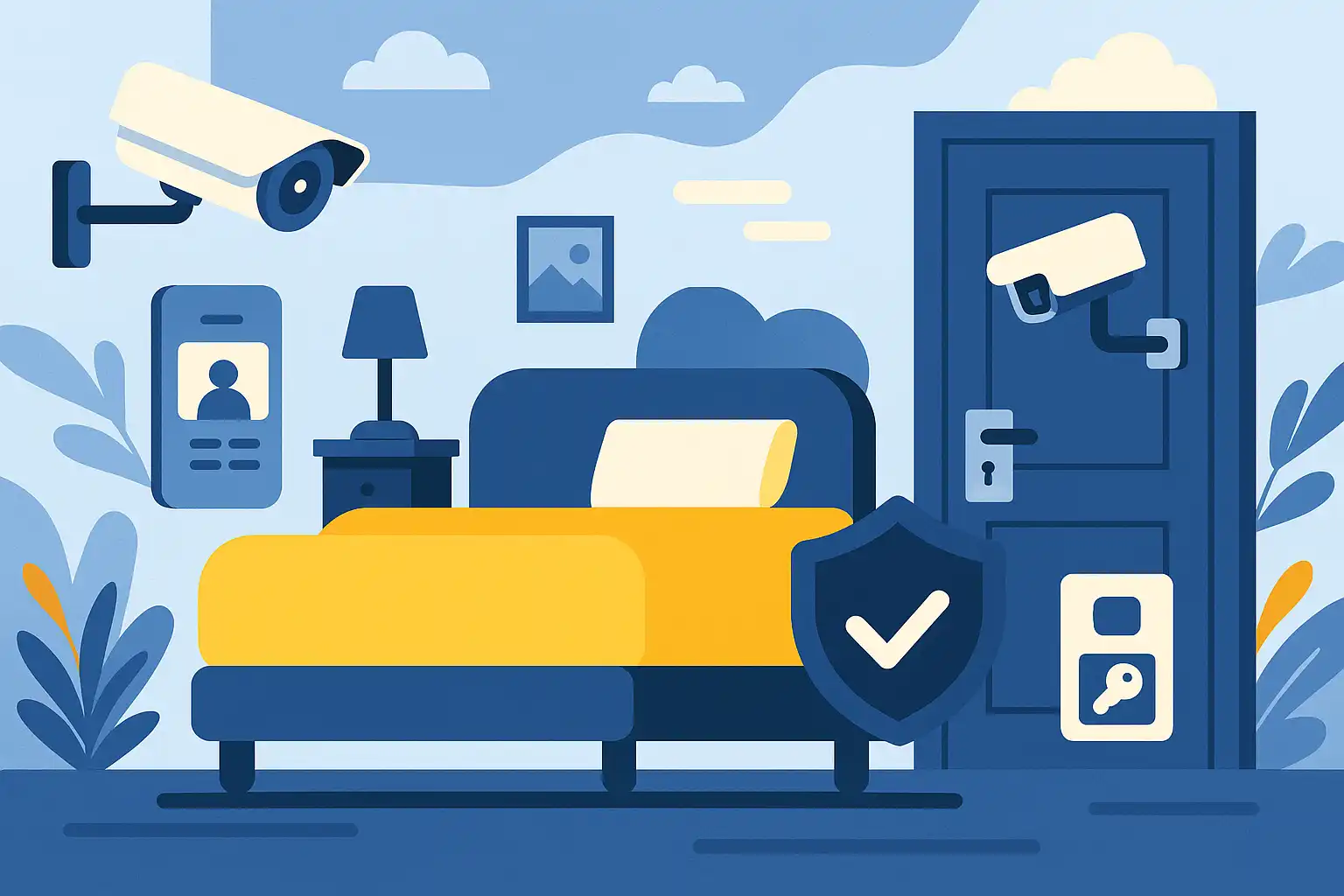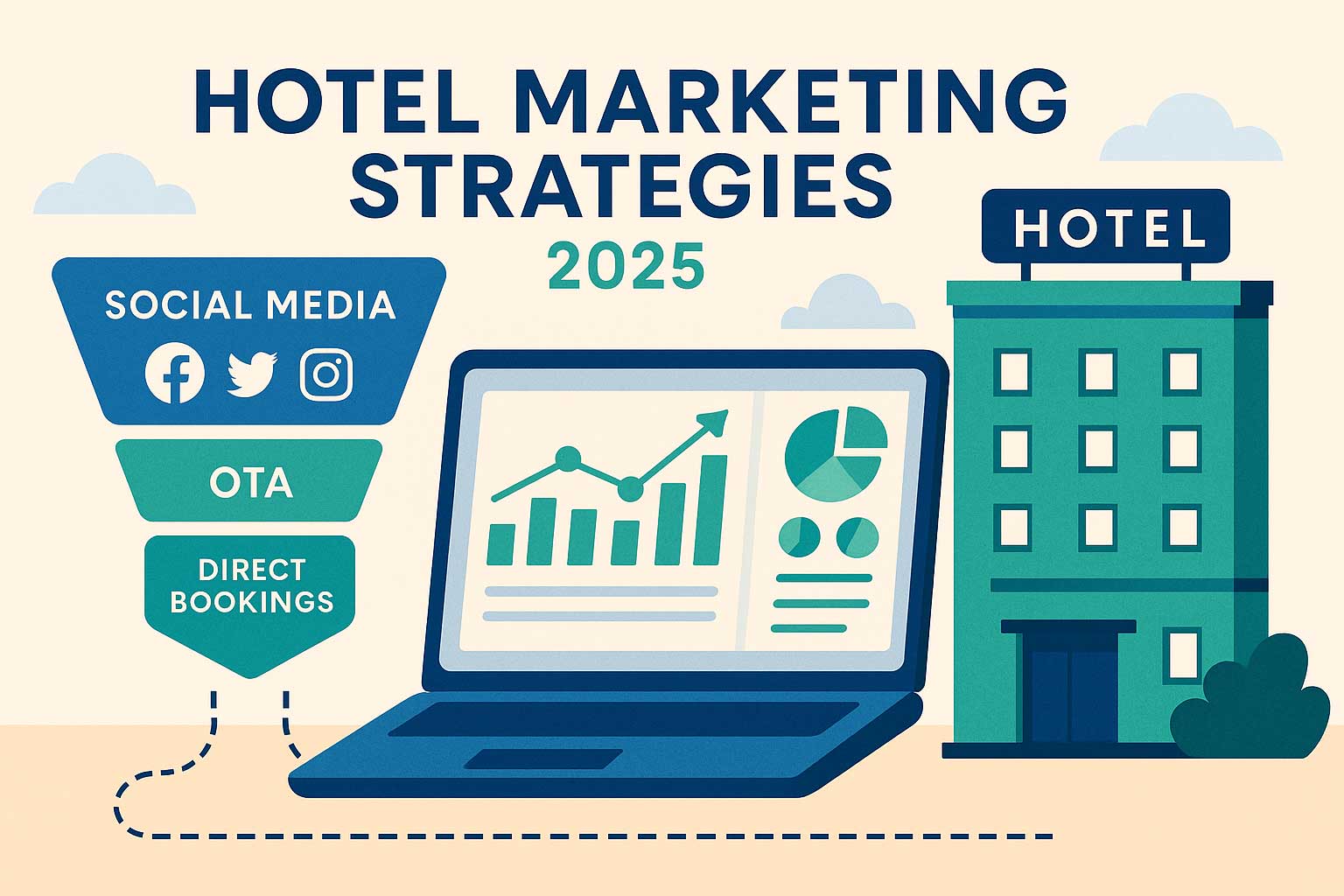Hotel HVAC System: Heating & Cooling Solutions for Hospitality
Sep 3, 2025
 Mika Takahashi
Mika TakahashiPopular Categories
Hotel Technology & InnovationHotel Operations OptimizationDigital MarketingIndustry TrendsRevenue ManagementHospitality Industry
Popular Categories
Trending Post

Hotel Walk Letter Template: Professional Guest Communication

Online Travel Agents: What They Are and How They Work

Hotel Security Systems: Modern Protection Solutions

Hotel Advertising: Complete Guide to Boost Bookings and Revenue

25 Hotel Marketing Strategy Ideas for 2025: Complete Guide

AI Reservation Agent: Revolutionizing Hotel Booking and Guest Experience

PMS Communication: Streamlining Property Management Through Effective Guest Messaging
Table of contents
When it comes to running a hotel, the HVAC system is one of those behind-the-scenes heroes that can make or break the entire guest experience. It’s a huge investment that affects not only your operational costs but also how comfortable your guests feel during their stay. Considering that HVAC systems consume between 40-50% of a hotel’s total energy, choosing the right heating and cooling setup is crucial for keeping both your bottom line and your guests happy. Today’s hotel owners have plenty of options—from packaged terminal air conditioner units to variable refrigerant flow systems and other cutting-edge technologies—that strike a balance between comfort, efficiency, and cost.
The hospitality industry demands HVAC systems that run smoothly around the clock, maintaining the perfect indoor climate across a variety of spaces—from cozy guest rooms to bustling lobbies, restaurants, and conference halls. This guide dives into the key technologies, energy factors, and strategic decisions that help hotels pick and install the best HVAC system for their needs.
Understanding Hotel HVAC Systems
HVAC stands for Heating, Ventilation, and Air Conditioning, and these systems are essential for keeping hotel environments comfortable by managing temperature, air quality, and humidity throughout the building.
Hotels typically rely on three main types of HVAC systems: Packaged Terminal Air Conditioner (PTAC), Vertical Terminal Air Conditioner (VTAC), and Variable Refrigerant Flow (VRF) systems. Each serves different property types and operational goals, offering unique benefits when it comes to installation costs, energy efficiency, and guest comfort.
Since HVAC systems account for nearly half of a hotel’s energy consumption, they’re a major focus for managing hotel costs and meeting sustainability goals. Unlike home systems, hotel HVAC must juggle high guest comfort expectations while efficiently handling multiple zones and fluctuating occupancy. These systems need to be reliable 24/7, especially during busy seasons, without disrupting the guest experience.
Types of HVAC Systems Used in Hotels
Picking the right HVAC equipment depends on your hotel’s size, budget, guest expectations, and operational priorities. Each system type has its own strengths and weaknesses, so it’s important to weigh them carefully.
| System Type | Best For | Initial Cost | Energy Efficiency | Noise Level | Maintenance |
|---|---|---|---|---|---|
| PTAC | Budget hotels, motels | Low ($500-$1,500/unit) | Moderate (EER 9-10) | High (45-50 dB) | Simple |
| VTAC | Mid-range properties | Medium | Good | Moderate | Moderate |
| VRF | Luxury hotels | High | Excellent (EER 15-21) | Low (<35 dB) | Complex |
| Central AHU | Large properties | Very High | Variable | Very Low | Professional |
PTAC Systems for Budget Hotels
Packaged terminal air conditioner units are a popular, cost-effective choice for budget hotels and motels. These self-contained units fit through exterior walls—usually under windows—and give guests direct control over their room temperature. Combining heating and cooling in one unit, PTACs avoid the need for complex ductwork or centralized systems.
For hotel owners watching their budgets, PTACs are appealing because they’re affordable to install, generally ranging from $500 to $1,500 per unit. Their straightforward design means hotel staff can handle basic hotel maintenance without always needing specialized technicians. Plus, guests appreciate being able to adjust hvac settings to their liking, especially in economy accommodations.
On the downside, PTACs tend to be noisier—around 45-50 decibels—which might bother some guests. Their energy efficiency is also lower than premium options, with Energy Efficiency Ratios (EER) of 9-10 compared to VRF systems that can reach 15-21. Additionally, PTACs offer limited air filtration, which could be a concern for guests mindful of indoor air quality.
VRF Systems for Premium Properties
Variable refrigerant flow systems are the go-to for mid-range and luxury hotels that want precise temperature control across multiple zones. A single outdoor unit connects to several indoor fan coil units, allowing different areas of the hotel to be heated or cooled simultaneously. This flexibility is especially valuable in buildings with varied sun exposure and space needs.
VRF systems are whisper-quiet, operating below 35 decibels, which is a big plus for guest comfort in upscale properties. They also feature advanced heat recovery technology that transfers excess heat from cooling zones to areas that need heating, boosting overall energy efficiency.
While the upfront investment is higher than PTACs, VRF systems often pay off with 20-30% energy savings over time, leading to significant cost savings. Their modular design also makes future expansions or renovations easier without a full system overhaul.
Energy Efficiency and Consumption in Hotel HVAC
HVAC systems can eat up 40-80% of a hotel’s total building energy, depending on factors like property size, system type, and operational habits. Large hotels with big common areas and dining facilities usually see higher energy use, while smaller or focused-service hotels can improve efficiency through smart zoning and controls.
Smart AC controls are a game-changer, cutting HVAC energy consumption by 20-30% annually by using intelligent scheduling and occupancy sensors. Hotels that adopt these technologies can save as much as $20,000 a year on energy bills, making the investment well worth it. Energy-efficient commercial boilers with remote monitoring help detect faults early and optimize performance, extending equipment life and reducing maintenance costs.
Programmable thermostats and occupancy sensors automatically adjust temperatures when rooms are unoccupied, preventing wasted energy. Demand-based ventilation systems also help by adjusting fresh air intake based on real-time occupancy, trimming energy use by 15-25% in common areas while maintaining excellent indoor air quality. Heat recovery ventilation captures energy from exhaust air to pre-condition incoming fresh air, adding another layer of savings in climates with extreme temperatures.
Smart Controls and HVAC Technology
Modern smart devices bring a new level of control to hotel HVAC systems. Intelligent scheduling adjusts temperatures based on guest habits and operational needs, pre-conditioning rooms before arrival and scaling back after checkout to save energy.
Occupancy sensors detect when guests are in their rooms, ensuring the system delivers comfort only when needed. Some advanced setups can tell the difference between brief absences and full checkouts, optimizing hvac settings accordingly. Hotels have reported room-level energy savings of 25-30% thanks to these smart features.
Centralized management platforms let hotel staff monitor and control multiple rooms from one interface, streamlining operations and improving overall system efficiency. These platforms integrate with existing systems, allowing unified control of heating, cooling, lighting, and more. Real-time alerts notify staff of maintenance issues before guests notice, helping prevent complaints and costly emergency repairs. Predictive analytics can even forecast potential equipment failures, enabling repairs during low-occupancy periods.
Interestingly, 79% of travelers now prefer hotels with eco-friendly smart HVAC features, making energy-efficient systems a strong selling point that boosts brand reputation while cutting operational costs.
Key Considerations for Hotel HVAC Selection
The size of your property and number of rooms largely dictate what HVAC system will work best. Smaller hotels with fewer than 50 rooms often find packaged terminal air solutions most cost-effective, while larger properties with over 100 rooms may benefit from VRF or central plant systems. Architectural constraints, especially in older buildings, can also limit options.
Guest expectations vary widely—budget hotels might prioritize affordability and basic function, while luxury properties demand whisper-quiet operation, precise temperature control, and top-notch air quality. Noise is a big factor, too: PTAC units can be noisy, which might be fine for motels but unacceptable for upscale city hotels where peace and quiet are expected.
Installation complexity and infrastructure needs differ greatly between new builds and retrofits. Older buildings may require costly electrical or structural upgrades to support modern HVAC systems. New constructions offer more flexibility to optimize system design.
Operational costs go beyond energy bills to include maintenance, staff training, and service contracts. Simple systems like PTACs are easier to maintain in-house, while VRF systems need specialized technicians and can be pricier to service. It’s important to consider total cost of ownership over the system’s lifespan, not just the purchase price.
Climate also matters. Hotels in warmer areas focus more on air conditioning efficiency, while those in colder regions need robust heating. Heat pump technologies that work well in mixed climates can offer year-round efficiency.
Indoor Air Quality and Ventilation Requirements
Good ventilation is essential to prevent stuffy rooms, mildew, and poor air quality—all of which can ruin guest comfort. Proper fresh air circulation removes odors, controls humidity, and dilutes contaminants from cleaning products and personal care items. Balancing ventilation with energy efficiency is key since bringing in too much fresh air can increase heating and cooling loads.
Many hotels now use HEPA filtration to improve indoor air quality, capturing tiny particles like dust, pollen, and some bacteria and viruses. This has become especially important post-COVID, as guests look for properties that prioritize health and safety.
Humidity control is also vital, maintaining relative humidity between 30-60% to avoid dry air discomfort and mold growth. This protects guests and prevents damage to furnishings and building materials. Humidity management can be tricky in humid climates or areas with pools and spas.
Fresh air circulation must meet health standards and guest comfort expectations, often exceeding minimum building codes. Demand-controlled ventilation adjusts fresh air based on occupancy, keeping air quality high while saving energy.
Air quality monitoring systems track ventilation and pollutant levels, helping hotels fine-tune their HVAC operation. Sensors for carbon dioxide and airborne particles provide real-time feedback, while some systems monitor volatile organic compounds that affect comfort and health.
Maintenance and System Reliability
Regular maintenance is critical to avoid unexpected HVAC breakdowns during busy times when guest comfort and revenue are on the line. Hotels need comprehensive maintenance programs with qualified technicians to keep systems running smoothly and extend equipment life.
Scheduling seasonal servicing, like September checks before winter heating ramps up, helps catch issues early. Gas Safe-registered engineers ensure commercial boilers are safe and efficient, reducing liability risks.
Predictive maintenance using smart sensors can cut emergency repair costs by spotting problems before failures occur. Some hotels report 30-40% fewer unplanned maintenance expenses thanks to these technologies.
With HVAC running 24/7, especially during extreme weather, having reliable service support is a must. Emergency response agreements and nationwide service networks help hotels minimize downtime and guest disruption.
Planning equipment replacement before failure allows hotels to budget and schedule upgrades during low-occupancy periods, reducing impact on guests and costs.
HVAC System Installation and Partnership Considerations
Choosing certified contractors with hotel experience ensures professional installation that meets industry standards and local codes. Experienced contractors understand the unique challenges of hospitality projects and work to minimize guest disruption.
Checking company credentials, customer reviews, and references from similar hotels helps ensure reliability. Licensing, insurance, and bonding are also important.
Rental and subscription packages for energy-efficient systems offer access to advanced technology without large upfront costs, appealing to hotels with limited capital. These packages often include equipment, installation, maintenance, and monitoring for predictable monthly fees.
Nationwide service networks provide quick response times across multiple locations, valuable for hotel chains. Standardizing equipment and service providers simplifies management and leverages economies of scale.
Comprehensive service contracts covering design, installation, and ongoing maintenance reduce vendor complexity and improve accountability. Some contracts include energy performance guarantees aligned with hotel goals.
Careful installation scheduling during renovations or low-occupancy periods helps avoid guest inconvenience. Clear communication about temporary noise or access limitations maintains customer experience.
Conclusion
A hotel HVAC system is more than just equipment—it’s a vital part of guest satisfaction, operational efficiency, and long-term profitability. Choosing between PTAC, VRF, and other technologies should reflect your property’s market positioning, guest expectations, and financial goals, considering lifecycle costs rather than just upfront prices.
Energy-efficient systems combined with smart controls can cut operational costs by 20-30% annually, delivering strong returns on investment. The rise of smart devices and remote monitoring is transforming HVAC management from reactive fixes to proactive comfort optimization, helping hotels prevent issues before guests notice while lowering energy bills.
As travelers increasingly value air quality and sustainability, hotels investing in advanced HVAC systems stand to gain a competitive edge through better guest experiences and operational savings.
Hotel owners and hospitality operators should carefully assess their property’s size, guest profile, climate, and priorities when selecting HVAC solutions. Partnering with certified professionals who know the hospitality industry ensures your system is designed and installed for success that lasts.
